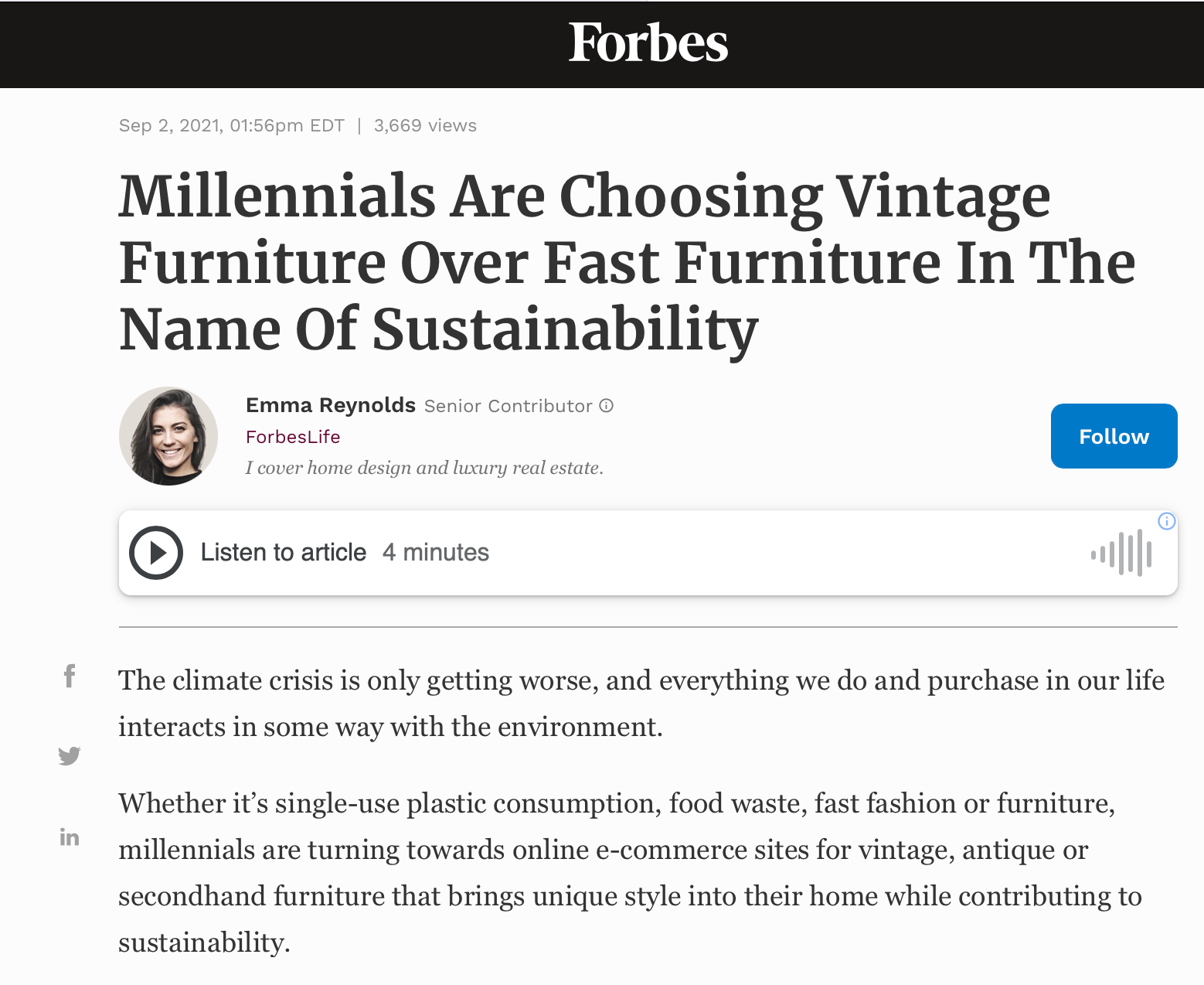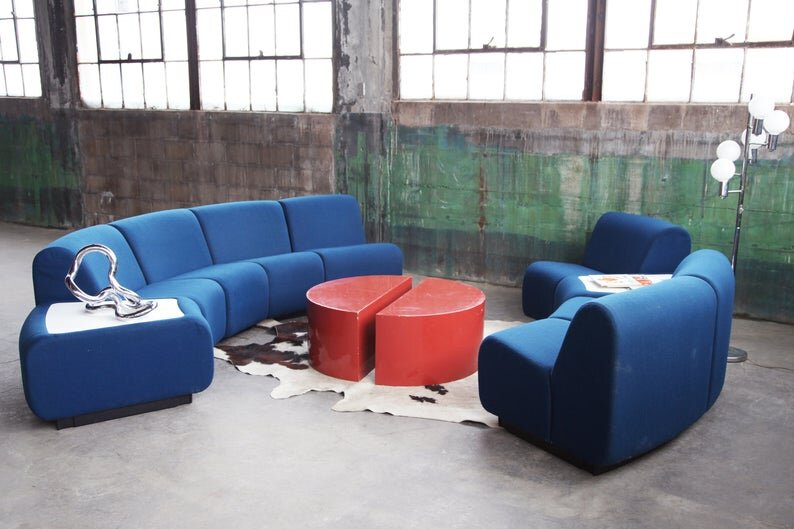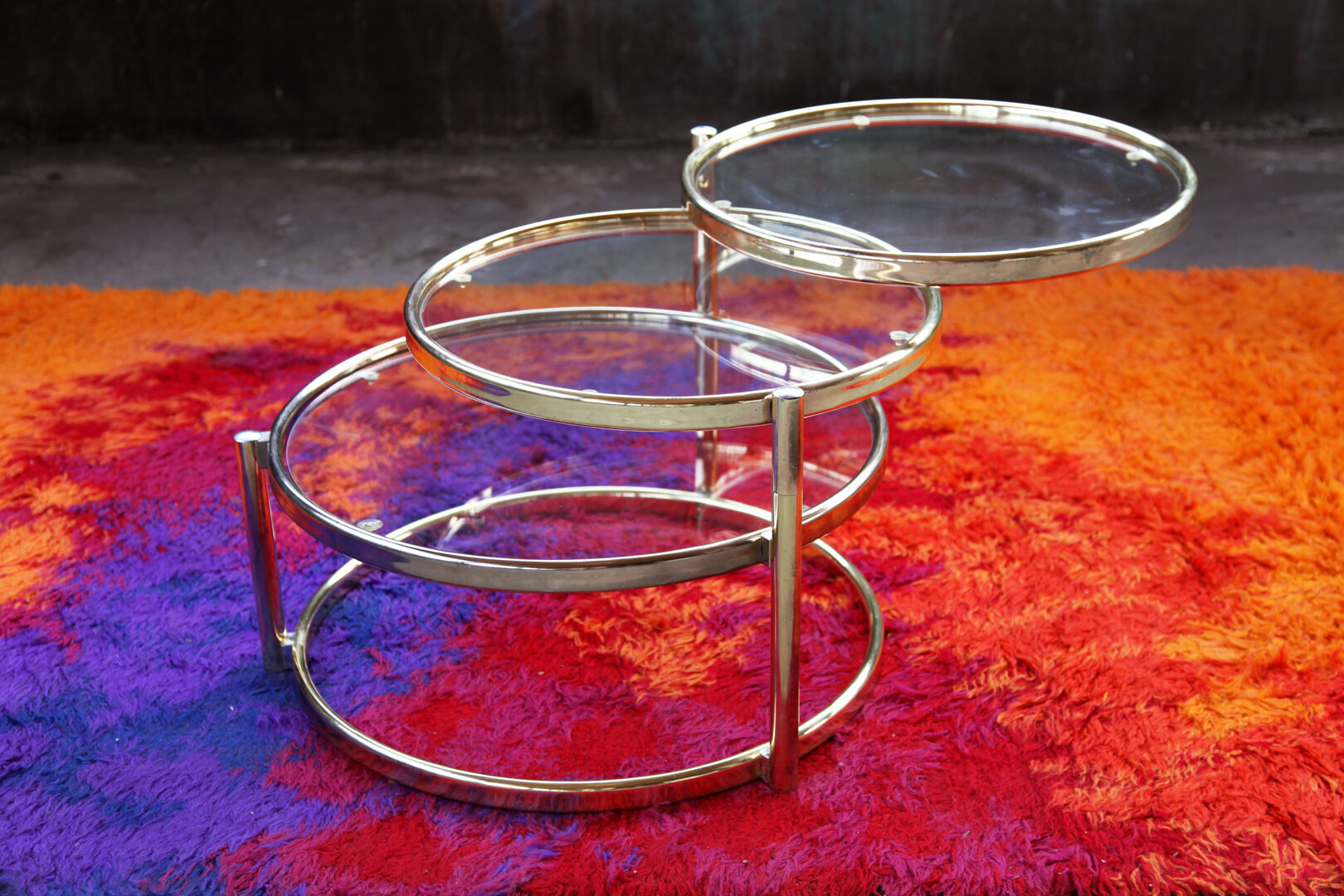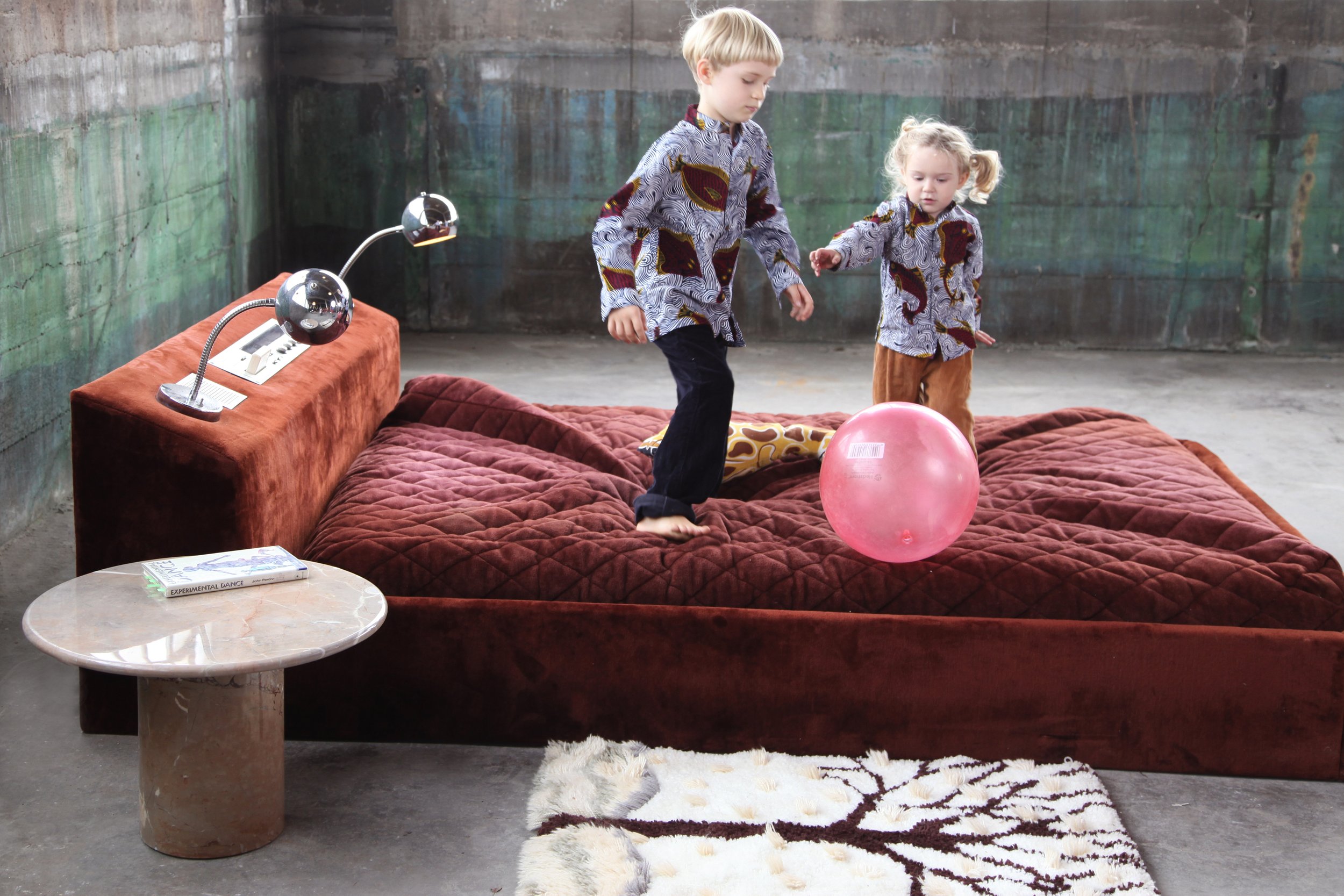Why Is Everyone Talking About Vintage Furniture?
“Whenever I can use vintage, I will. From a design standpoint, vintage is the protagonist of every room—it has the power to influence the storytelling and direction. Their patina brings a touchable texture and warmth to every space, not to mention a sacred sentimentality. But aside from their decorative propensity, these rare antiquities are stylishly sustainable. By repurposing the old, the damaged, the jagged into something new, we’re reducing our footprint while bringing a rich sense of history and spirit into a space.” -Athena Calderone, Vogue
With sustainability at the forefront of many consumers’ purchasing decisions today, it may not be surprising that Vogue recently declared that vintage accents were a household trend to look out for in 2022. For many people, though, the transition to restored furniture may be a new adjustment. If you’re eager to learn about vintage furniture but do not know where to start, keep reading to understand why everyone is talking about vintage furniture right now.
Why is vintage furniture making a comeback?
There are several reasons why consumers are switching to vintage furniture and joining the revival movement.
Research shows that younger demographics, particularly Millennials and Gen Z consumers, prioritize sustainability in their purchasing decisions. According to a 2020 survey, 73% of Gen Z respondents were willing to pay nearly 10% more for a product if they knew it was sustainable. However, these generations aren’t the only ones with sustainability in mind: over half of the survey’s respondents across generations had positive sentiment towards re-commerce and resale purchases
Given the state of our climate crisis, buyers may want to contribute less to our world’s production and consumption issues. This means choosing furniture and household items that are already in circulation. In addition, when comparing vintage items to “fast furniture” pieces, vintage pieces typically stand the test of time. A Forbes article noted that today’s furniture is increasingly made with toxic chemicals and lower-quality materials while vintage furniture was created with more craftsmanship. Pieces from 30, 40 and even 50 years ago are often still functional and in pristine condition despite weathering.
“When a piece is 40-70 years old, it sometimes needs new upholstery and gentle restoration. There is also a special kind of satisfaction in investing the time and energy to successfully breathe new life into an original and even give contemporary context to it, simply through exciting, relevant upholstery.” -Aliza Rand, Chairish Article
It may be clear at this point that vintage furniture offers a more sustainable option for eco-friendly consumers, but there are economical advantages as well. During the pandemic, the consumers saw the flaws in our country’s supply chain, particularly in the furniture sector. Due to backorders on raw materials, furniture and household accessories were not readily available like they once were. Consumers, including interior designers, who rely on these purchases for their jobs, either had to wait months for furniture to arrive or have their orders canceled. With vintage furniture, this is not an issue. Rising online resale marketplaces, such as Etsy, Chairish and 1stDibs, allow customers to buy furniture that is ready to ship because it is already in circulation. Vintage retail is a growing industry so consumers can choose from millions of curated and collectible items with no advanced planning.
If these reasons are not convincing enough, Vogue noted the innate design aspects of vintage pieces. Vintage furniture designs are unlike many brand-new pieces today: they offer a form of being a statement art piece and an investment for people’s homes. There is a special kind of joy that comes with collecting and finding rare pieces, or re-discovering society’s favorite designers.
At Catch My Drift, we’ve allowed our customers the opportunity to buy unique pieces that can be passed down for generations. Below are some of our favorite pieces that have incredible stories:







